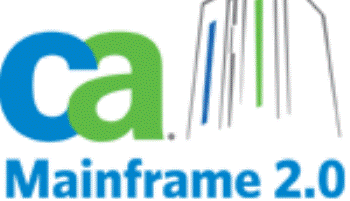Mainframe management specialist CA is delivering Chorus, the central plank of its “mainframe 2.0” designed to create a more user-friendly front end to mainframe management, rendering them usable by people under fifty.
Mainframes are still central to most enterprise processing and they will continue to increase, according to CA, because mainframes work well as cloud computing platforms – and the prospects of the sector have revived with the recent announcement of IBM’s hybrid zEnterprise server.
However, the skills to manage them are in danger of dying out, so in May this year CA announced Chorus – a front end which could be described as a mainframe mashup, taking information from numerous system management tools for IBM’s z series mainframes. The initiative is part of a two year old “Mainframe 2.0” strategy.
Making mainframes cool
 Chorus will be delivered as a series of “roles”, where tools for particular job functions are combined in a front end looking like modern programs such as Outlook. This may sound an obvious thing to do, but the software is intended to replace modes of work where users have no graphical interface, and toggle between multiple character-based “green screens” for tiny portions of any task.
Chorus will be delivered as a series of “roles”, where tools for particular job functions are combined in a front end looking like modern programs such as Outlook. This may sound an obvious thing to do, but the software is intended to replace modes of work where users have no graphical interface, and toggle between multiple character-based “green screens” for tiny portions of any task.
The first role to be delivered will be that of DB2 administrator, which has been in beta with several users and is due for formal delivery in November. Other roles will appear at roughly six monthly intervals – the next role, security administrator, is about to enter beta, and will be followed by storage.
This approach will allow administrators to perform real jobs much more easily, said Scott Fagen (above), distinguished engineer at CA, who demonstrated how roles could spot and fix a security issue at a CA event in Prague.
“This could be really important,” said analyst Tony Lock, programme director at Freeform Dynamics. “All the surveys show that mainframes have a much lower cost of administration, but today’s generation has never used a command line.” Without something like Chorus, younger people would never be able to manage mainframes at all, he said.
Mainframe mashup
Added to this, the “mashup” aspect, where different tools are integrated behind the Chorus UI, could make it even more powerful, he said.
In the demonstration, Fagen showed Chorus raising an alert when one user began to dominate database accesses, and then allowing an administrator to drill in and find out that his security clearance had been mis-applied, and his accesses were outside office hours.
CA gave the demonstration at its Prague Technology centre, established as a mainframe centre of excellence in 2005, to provide training in mainframe management. “Mainframe people are greying out, and people at university are not learning mainframe skills, said Thoms Leitne, vice president of sales for mainframes in EMEA at CA. “Those at university don’t learn mainframe skills – they learn Java and Linux.”
UK-based catalogue sales company J D Williams is moving towards web sales using a system based on IBM’s zOS, according to Kieth Winnard, an IT team leader. “Running the e-business on zOS allowed us to keep the core applications as they are,” he said.
“We have a get-things-done culture in Prague,” said Radovan Janecek, vice president of software engineering at CA and head of the Prague Centre of Excellence, pointing out that AVG free anti-virus and other innovations have emerged there.
The Centre works with universities and delivers mainframe courses according to requirements of mainframe users, said Janecek.
Death of the mainframe?
Through the 1990s, the death of the mainframe was regularly predicted, said Leitner, notably around the time of the Y2K panic in 2000. Despite this, the number of mainframe MIPS sold grew 300 percent from 2000 to 2008. “It dipped in 2009, because people were anticipating the launch of z Enterprise,” he said.
“Now there is enthusiasm, because there is a next-generation architecture which combines mainframes and blades,” he said. “The death of the mainframe is a dead idea.”
Eighty percent of UK businesses believe the mainframe is essential, and 75 percent think it should be included in any cloud computing initiative, according to a survey of 300 IT professionals carried out for CA by Vanson Bourne.





